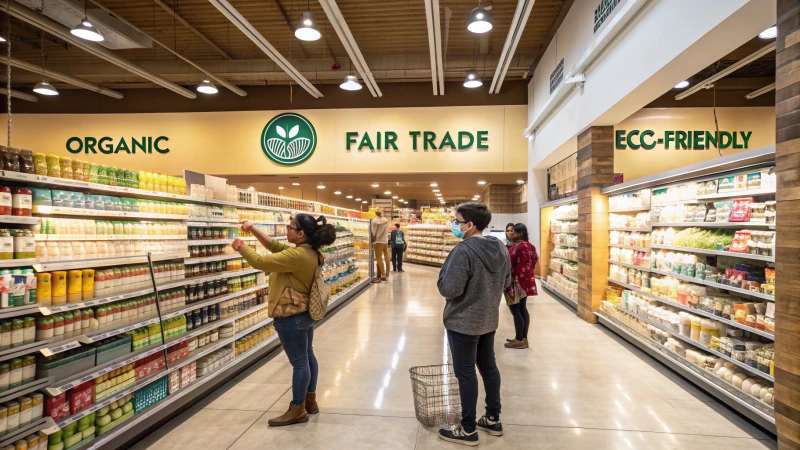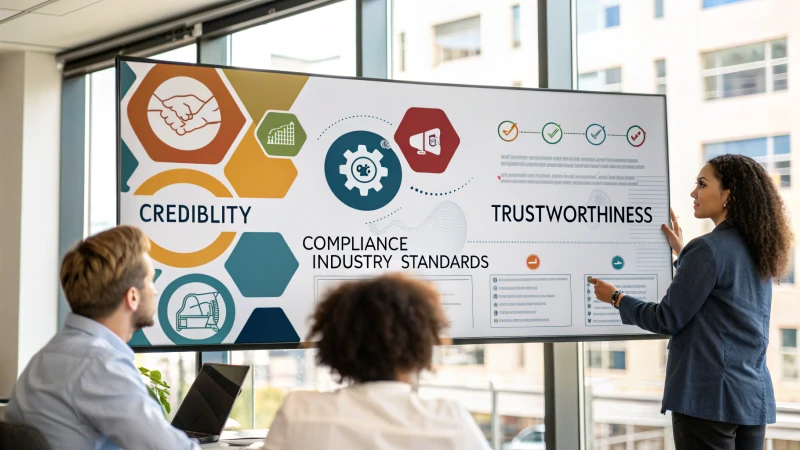
Imagine hosting a picnic with wooden cutlery that's not only stylish but safe. Ever wondered what ensures their quality?
Food-grade certification for disposable wooden cutlery ensures that these utensils are safe for food contact, meeting strict regulatory standards. This seal of approval boosts consumer confidence by guaranteeing both safety and eco-friendly credentials, making them a trustworthy choice for dining experiences.
I remember the first time I opted for wooden cutlery at a family gathering. The rustic charm added a special touch, but what truly mattered was knowing they were safe to use. Food-grade certification wasn't just a label; it was my assurance that I was providing the best for my loved ones.
When certifications like FDA or LFGB back these products, it speaks volumes about a brand's commitment to safety and quality. This isn't just about meeting regulations; it's about building trust with consumers who care about sustainability and health. In a world where eco-friendly choices are on the rise, having that certification can significantly influence purchasing decisions, setting brands apart in a competitive market.
Food-grade certification ensures wooden cutlery is safe for food use.True
Certification verifies the materials are safe and meet standards.
Non-certified cutlery can be equally trusted for food safety.False
Without certification, there's no guarantee of safety or compliance.
What Are the Key Certifications for Wooden Cutlery?
Ever wondered how wooden cutlery keeps up with safety and sustainability standards? Let's dive into the certifications that make all the difference!
Key certifications for wooden cutlery include FSC, FDA, and LFGB. These ensure the cutlery is sustainably sourced, food-safe, and meets global health standards, boosting consumer confidence and appeal.

Understanding Key Certifications
I remember the first time I realized just how important certifications were for products like wooden cutlery. It was when a friend, deeply passionate about sustainability, wouldn't stop talking about the Forest Stewardship Council (FSC) certification. She explained how it guaranteed that the wood came from responsibly managed forests—something eco-conscious consumers like her truly value.
-
FSC (Forest Stewardship Council): It's like giving your cutlery a green thumbs-up! This certification assures customers that their purchase supports forest conservation, which means a lot to those of us who care about our planet. Learn more
-
FDA (Food and Drug Administration): Ah, the peace of mind knowing that what touches our food is safe! This U.S. certification tells us the product is free from harmful chemicals, crucial if you're selling in or importing to the U.S. Learn more
-
LFGB (Lebensmittel-, Bedarfsgegenstände- und Futtermittelgesetzbuch): This one's for our friends across the pond in Europe. It's a German standard that ensures products are safe for food contact, providing reassurance to anyone who's serious about health and safety. Learn more
The Impact of Certification on Consumer Trust
There’s something reassuring about knowing that a product has been thoroughly vetted by experts. For me, certifications have always been a way to trust that I'm making the right choice—whether it’s for my family or my business. An FSC label tells me I’m supporting sustainable practices. FDA approval? It’s my go-to signal that the product won’t harm my loved ones with unexpected chemicals.
And if you’re marketing in Europe, LFGB certification could be your golden ticket. It’s respected for its rigorous standards and signals to consumers that your product is top-notch in terms of safety.
A Table of Certifications
| Certification | Region | Focus |
|---|---|---|
| FSC | Global | Sustainable Sourcing |
| FDA | USA | Food Safety |
| LFGB | Europe | Food Contact Safety |
Why Certification Matters for Businesses
Let’s face it—getting certified can open doors to new markets and help us stand out in a competitive landscape. For businesses like mine, having these certifications isn’t just a checkbox; it’s an opportunity to build trust and long-lasting relationships with customers. It’s about aligning our products with values that matter not just to me but to the communities we serve.
Knowing these certifications inside out helps us navigate regulatory waters smoothly and anticipate consumer needs better. In a world increasingly leaning towards sustainability, being a step ahead with certified products can make all the difference in expanding market reach and enhancing customer satisfaction.
FSC certification is only required in the USA.False
FSC is a global certification for sustainable sourcing, not limited to the USA.
LFGB certification is essential for entering the European market.True
LFGB ensures products meet strict European safety standards, crucial for market entry.
How Do Certifications Impact Consumer Trust?
Have you ever wondered how those little certification badges on products impact our buying decisions? They might seem small, but they pack a punch when it comes to earning our trust.
Certifications impact consumer trust by assuring that a product meets verified standards, boosting credibility and swaying purchasing decisions. They act as a beacon of quality and dependability.

The Role of Certifications in Building Trust
I remember the first time I noticed a certification label on a product I was about to buy. It was a simple sticker, but it made me pause and reconsider my options. Certifications serve as third-party validations that assure us, the consumers, that a product meets certain standards. Take the food industry, for instance—those food-grade certifications1 make sure our wooden cutlery is safe and free from any nasty substances.
Why Consumers Value Certifications
In my shopping adventures, I've found myself instinctively reaching for products with certification marks. It's like an invisible seal of approval, telling me that this product has passed some tough tests and aligns with safety or environmental standards. For example, an eco-label can make a product more appealing by confirming its green credentials.
| Certification Type | Consumer Assurance |
|---|---|
| Organic | Free from synthetic additives |
| Fair Trade | Ethical labor practices |
| Energy Star | Energy efficiency and cost savings |
Certifications as a Marketing Tool
From my experience working in marketing, I've seen how brands use certifications as powerful tools to stand out. Labels like "organic" or "fair trade" can make products pop on store shelves and attract those eco-conscious shoppers we all know and love. In e-commerce, showcasing certifications on product pages can really boost conversion rates by giving customers confidence in what they're buying.
Challenges in Certification Processes
Of course, getting these certifications isn't always a walk in the park. Companies often face complex and costly hurdles to meet various certification standards across different regions. From what I've learned, navigating these certification processes2 is key for businesses aiming to broaden their market reach.
Note: Always check the authenticity of certification marks to prevent misleading your customers and risking your brand's integrity.
Future Trends in Certification and Consumer Trust
As we become more informed consumers, our demand for transparency grows. Innovative solutions like blockchain technology are being explored to enhance supply chain traceability, offering real-time verification of certifications. Staying updated on these emerging trends3 can help businesses like ours maintain consumer loyalty and stay ahead of the curve.
Certifications increase consumer trust in products.True
Certifications serve as third-party validations, enhancing product credibility.
Obtaining certifications is inexpensive for companies.False
Certification processes can be complex and costly for businesses.
How Can Certification Boost Market Competitiveness?
Ever wondered how a little certification can transform a business? Let me take you on a journey where certification acts as a game-changer in the competitive market landscape.
Certification is like a badge of honor that signals quality and trust. It boosts consumer confidence, sets businesses apart in competitive environments, and ensures adherence to industry standards, ultimately enhancing market share and reputation.

Understanding the Role of Certification
Certifications like ISO 90014 or LEED5 are akin to golden stars on a report card. They aren’t just decorations; they’re proof that a company is serious about quality and sustainability. I’ve seen firsthand how businesses in healthcare and food services use these certifications to clinch deals with discerning clients who value credibility.
| Certification Type | Industry | Impact |
|---|---|---|
| ISO 9001 | Manufacturing | Quality Assurance |
| LEED | Construction | Sustainability |
| FSC | Wood Products | Environmental Responsibility |
The Impact on Consumer Trust
When I’m shopping, I tend to feel more secure when I see certification marks on products. It’s like a silent promise of safety and compliance, especially with things like medical supplies6. Such assurances foster repeat business and loyalty, as consumers gravitate towards brands they trust.
Competitive Edge in Global Markets
In my experience, certifications can be the key to unlocking international markets. For example, if you’re eyeing the European market, you might find certifications like CE marking7 essential. They ensure that products meet stringent standards, giving certified businesses an edge over those without.
Cost vs. Benefit Analysis
Initially, the costs of certification might seem daunting. But from what I've seen, the benefits—such as access to new markets and streamlined processes—often outweigh these expenses. It’s about weighing these costs against potential gains like an expanded customer base8 and increased brand value.
Examples of Certification Impact
- Healthcare: Certifications like ISO 13485 are crucial for ensuring medical devices meet regulatory standards. For companies like WonBon9, supplying eco-friendly cutlery to hospitals, this is vital.
- Food Industry: In this sector, certifications such as HACCP10 are essential for maintaining food safety. This helps build consumer trust in a fiercely competitive market.
By embracing certifications, businesses can not only enhance their market standing but also appeal to eco-conscious consumers and partners. Whether it's through improved quality assurance or meeting local regulations, certifications are a strategic advantage in today’s fast-paced business world.
ISO 9001 is primarily for environmental responsibility.False
ISO 9001 focuses on quality assurance, not environmental responsibility.
LEED certification impacts sustainability in construction.True
LEED certification aims to improve sustainability practices in construction.
Why Choose Certified Wooden Cutlery for the Environment?
Imagine the satisfying crunch of breaking a wooden fork in your hands—it's eco-friendly and guilt-free!
Certified wooden cutlery provides impressive environmental benefits such as biodegradability, lower carbon emissions, and sustainable sourcing, unlike plastic which lingers in landfills. It breaks down naturally and supports forest conservation efforts, making it a responsible choice for eco-conscious consumers.

Biodegradability and Reduced Waste
I remember the day I decided to make the switch from plastic to wooden cutlery. It hit me as I was tidying up after a picnic, staring at a pile of plastic forks that would probably outlive me. That was my turning point. With certified wooden cutlery, I've found peace knowing that these utensils break down naturally, unlike their plastic counterparts which stubbornly stick around for centuries. This simple change significantly reduces landfill waste and pollution, offering a cleaner planet for future generations.
Sustainable Sourcing
When I first learned about sustainably managed forests, it was like a lightbulb moment. These aren't just any trees; they're part of a bigger plan to keep our planet thriving. Certified wooden cutlery often comes from these forests, where certifications like the FSC (Forest Stewardship Council)11 ensure that the wood is harvested responsibly. This practice not only conserves forests but also supports biodiversity—an essential piece of the ecological puzzle that keeps nature in balance.
Carbon Footprint Reduction
The thought of contributing to fewer carbon emissions gives me a sense of relief. Producing wooden cutlery generally requires less energy and emits fewer greenhouse gases compared to plastic. I came across a study comparing the lifecycle analyses of various materials, and it was eye-opening to see that wooden cutlery12 produced significantly less CO2 emissions.
| Material | CO2 Emissions (kg/ton) |
|---|---|
| Plastic | 6,000 |
| Wooden | 1,200 |
Support for Local Economies
There's something incredibly satisfying about supporting local communities through my purchases. Many suppliers of certified wooden cutlery source their wood locally, which means jobs and stability for those communities. It’s a win-win: adhering to environmental standards13 while giving back.
Promoting Consumer Awareness
Choosing certified products has been a journey of education for me. Each time I opt for wooden over plastic, I feel like I'm taking a stand, albeit small, for a more sustainable future. This decision not only benefits the environment but also encourages more eco-conscious behavior across industries, signaling a shift towards greener habits. These choices might seem minor but collectively, they have the power to make a significant impact.
Certified wooden cutlery is biodegradable.True
Wooden cutlery decomposes naturally, unlike plastic, reducing landfill waste.
Wooden cutlery emits more CO2 than plastic.False
Wooden cutlery emits less CO2 (1,200 kg/ton) than plastic (6,000 kg/ton).
Conclusion
Food-grade certification enhances the safety and credibility of disposable wooden cutlery, boosting consumer trust and supporting eco-friendly practices in a competitive market.
-
Learn about food-grade certifications to ensure safety and compliance in food-related products. ↩
-
Understanding certification processes can aid businesses in gaining consumer trust through verified standards. ↩
-
Stay informed on technological advancements like blockchain that enhance certification transparency. ↩
-
Learn about ISO 9001 certification to understand its role in enhancing quality management systems globally. ↩
-
Explore how LEED certification promotes sustainable building practices and benefits environmentally-conscious companies. ↩
-
Find out about key certification standards in the medical supply industry to ensure safety and compliance. ↩
-
Discover the significance of CE marking for companies aiming to enter European markets. ↩
-
Understand how certification can expand customer bases and enhance brand credibility. ↩
-
See how WonBon uses certifications to market its sustainable products in healthcare. ↩
-
Learn how HACCP helps maintain high food safety standards critical in the food industry. ↩
-
Explore how biodegradable cutlery helps reduce landfill waste and its positive environmental impact. ↩
-
Discover detailed comparisons of carbon emissions between wooden and plastic utensils. ↩
-
Understand the environmental standards that govern sustainable wood product certifications. ↩

